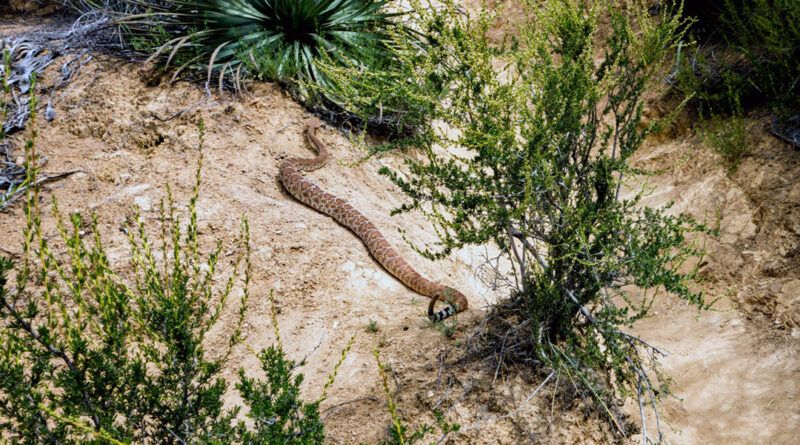Snake Bite First Aid and Prevention when You’re on the Trail
For those of us who enjoy heading out into the wilderness, snake encounters are a fact of life. The good news is that the chance of being bitten by a venomous snake is very low, while the likelihood of surviving a bite is extremely high. According to the CDC, “It has been estimated that 7,000–8,000 people per year receive venomous bites in the United States, and about 5 of those people die.”
With that in mind, let’s take a look at a few simple things you can do to prevent snake bites.
Preventing Snake Bites – Your First Line of Defense
- Never go barefoot or wear sandals when walking through wild areas. Wear hiking boots.
- When hiking, stick to well-used trails and wear over-the-ankle boots and loose-fitting long pants. Avoid tall grass, weeds and heavy underbrush where snakes may hide during the day.
- Do not step or put your hands where you cannot see, and avoid wandering around in the dark. Step ON logs and rocks, never over them, and be especially careful when climbing rocks or gathering firewood. Check out stumps or logs before sitting down, and shake out sleeping bags before use.
- Never grab “sticks” or “branches” while swimming in lakes and rivers. Rattlesnakes can swim.
- Be careful when stepping over the doorstep as well. Snakes like to crawl along the edge of buildings where they are protected on one side.
- Never hike alone. Always have someone with you who can assist in an emergency.
- Do not handle a freshly killed snake, it can still inject venom.
- Teach children early to respect snakes and to leave them alone. Children are naturally curious and will pick up snakes.
Source: USDA Forest Service
Identifying Dangerous Snakes

The next step is learning to identify dangerous snakes in your area. Most snakes are harmless, and all snakes play an important role in the ecosystem. Do your part to keep yourself and the snakes around you safe by learning to identify the dangerous snakes in your area.
CaliforniaHerps.com is a great resource for snake identification if you live in California.
Snake Bite First Aid – What to Do If You Do Get Bitten
There’s a lot of information out there about snake bite first aid. For years, the common belief was that cutting the bite area and sucking out the venom would save your life. Although it works in the movies, in the real world this treatment could not only cause undue injury to the surrounding tissues, it could also introduce venom into a cut or sore in the mouth. No matter how you look at it, that’s just bad news. The proper approach to first aid is much more straightforward.
In a recent interview on the subject, Dr. Timothy B. Ericson, Former Director of Medical Toxicology at the University of Illinois, said that the best thing you can do if bitten is to stay calm and get yourself to an emergency room as quickly as possible. They’ll have the antivenom and the knowledge needed to take care of your snake bite.
Watch the full interview with Dr. Ericson below to learn more about the latest treatments for snake bites, and what to do if you’re bitten while hiking.
It’s important to note that during the interview, Dr. Ericson mistakenly states that you should elevate the bite wound above the heart, which conflicts with the latest thinking on snake bite treatment. That statement was cleared up later by the video producer when a viewer brought up the discrepancy. Here’s the producer’s response to the viewer’s question:
I contacted Dr. Erickson who said that he misspoke and recommends placing the arm at the cardiac level (not above) as he demonstrates in this video. Thank you for catching this detail.
